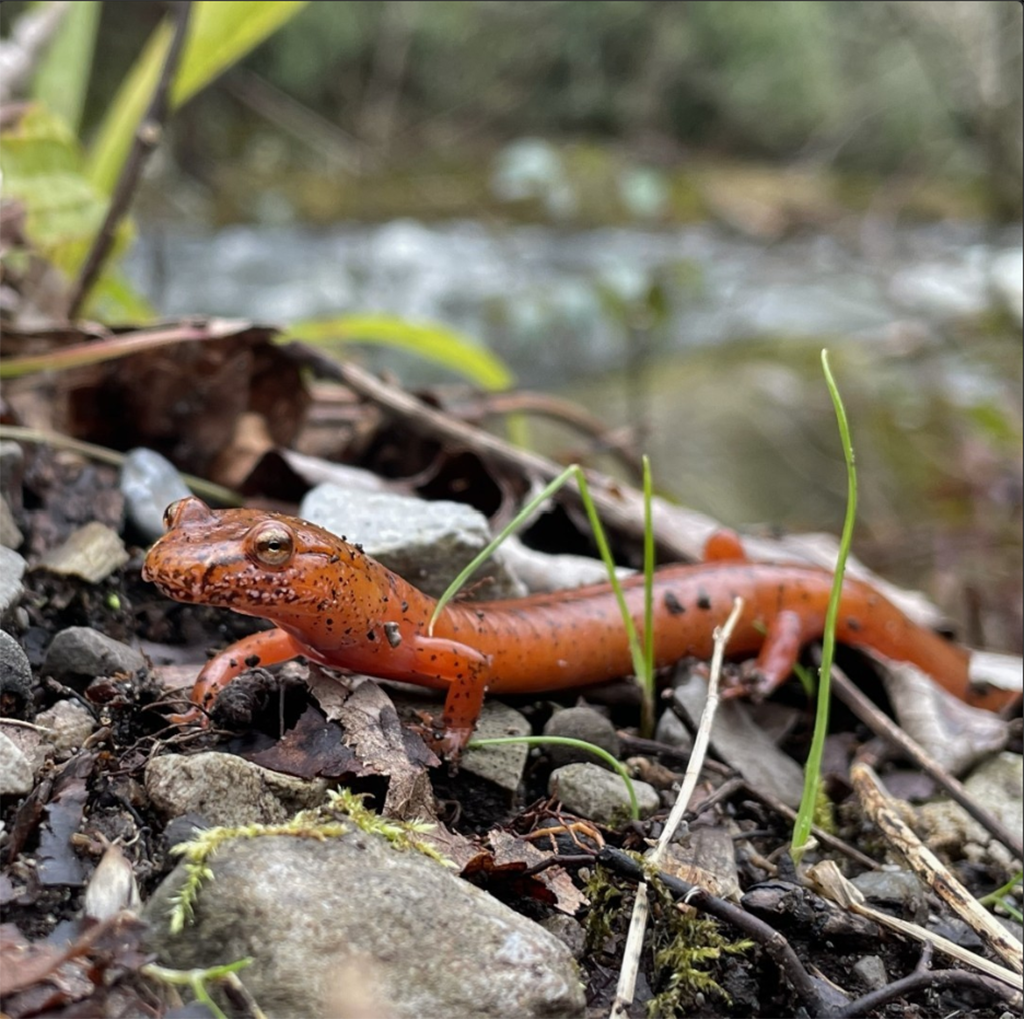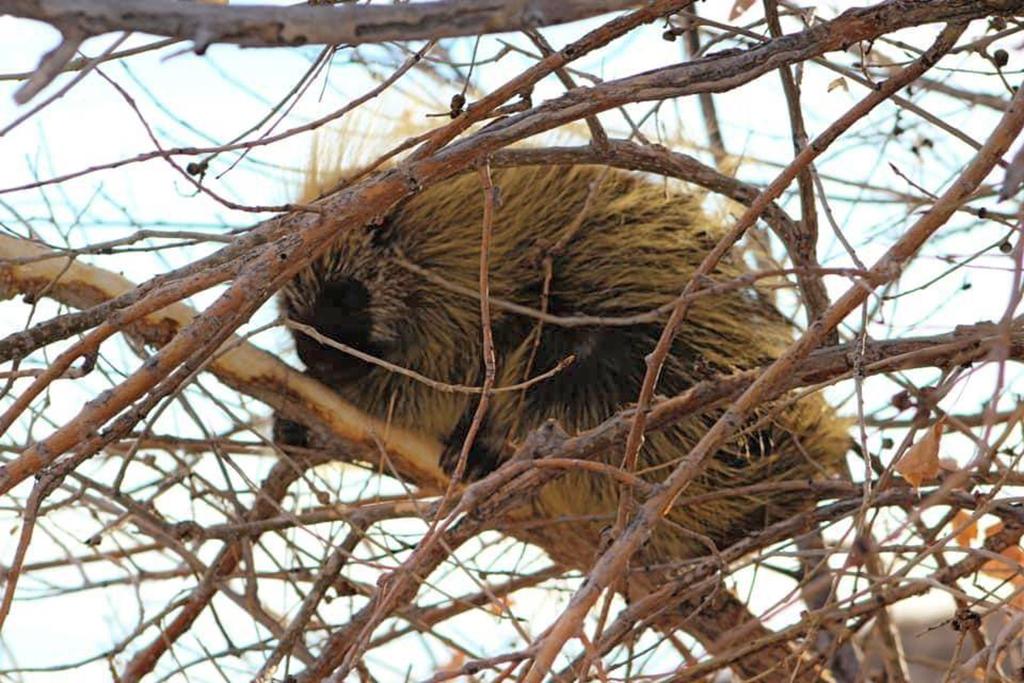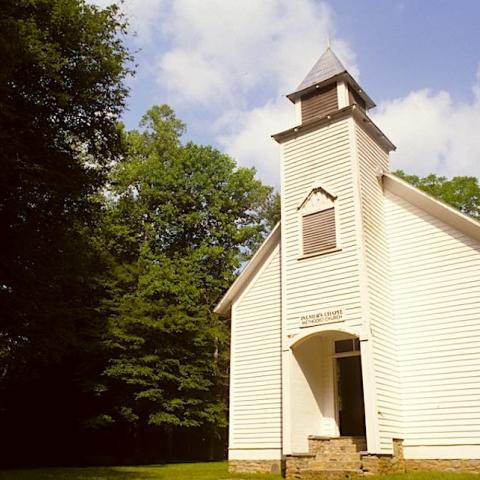There are so many interesting things to see and learn about units of the National Park System, so here’s the latest quiz and trivia piece with which to test your knowledge. Just how much do you really know about the parks and what’s in them?

The view up the lake at Lake Roosevelt National Recreation Area / Rebecca Latson
1. True or False: Lake Roosevelt (at Lake Roosevelt National Recreation Area in Washington state) is the Columbia River.
a) True
b) False

A corkring by any other name ... Petrified Forest National Park / NPS file
2. One of the first flowers to start blooming in the spring at Petrified Forest National Park in Arizona is the corkwing, a short, round wildflower with purple and white florets. The corkwing goes by another name: ___.
a) Wild carrot
b) Biscuitroot
c) Twisty weed
d) Turniproot

Spring salamander, Great Smoky Mountains National Park / NPS - Kenzie Connor
3. Great Smoky Mountains National Park (North Carolina / Tennessee) is known as the “Salamander Capital of The World,” according to the National Park Service. This is because there are ___ species of salamander in this park.
a) 29
b) 30
c) 31
d) 32

Limberbush close-up, Organ Pipe Cactus National Monument / NPS - K. Girard
4. Hike along the Desert View Trail at Organ Pipe Cactus National Monument in Arizona, and you are certain to come across the limberbush (Jatropha cuneata), a shrub with extremely pliable branches and fleshy stems. This shrub also has another name: ___
a) Water cushion
b) Bitter Branch
c) Fairy Wings
d) Blood of the Dragon

Gophersnake tongue-flicking, Joshua Tree National Park / NPS - Carmen Aurrecoechea
5. While hiking around Joshua Tree or Death Valley national parks in California, or any other arid park, you might have come across a snake on or alongside the trail. When a snake wants to gather information about its surroundings and gather scents, it sticks out its tongue. This is called “tongue-flicking.” The scent particles gathered by this behavior is then transferred to a special organ in the roof of the snake’s mouth called ___.
a) Jacobson’s organ
b) Stephenson’s organ
c) Millicent’s organ
d) Deandra’s organ

Porcupine in a tree, Badlands National Park / NPS - L. Bowers
6. While it may seem a little out of place to see a porcupine waddling around (or lounging in a tree) at Badlands National Park in South Dakota, they are found in the park. True or False: when threatened, a porcupine can shoot its quills up to six feet away.
a) True
b) False

Platanthera dilatata goes by another name, too, at Mount Rainier National Park / NPS - C. Veccio
7. DYK orchids bloom in Mount Rainier National Park in Washington state? According to the National Park Service, “Platanthera dilatata is easily the most recognizable of Mount Rainier National Park's Orchidaceae.” This orchid is also known by the name ___.
a) Sugar cone
b) White pineapple
c) Bog candle
d) Angel’s robes
8. Yellowstone National Park (MT, ID, WY) has eight species of ungulates (animals with hooves): bighorn sheep, bison, elk, moose, mountain goats, mule deer, white-tailed deer, and ___.
a) Horses
b) Camels
c) Pigs
d) Pronghorn

A big brown bat, Cuyahoga Valley National Park / NPS - Bob Trinnes
9. Cuyahoga Valley National Park in Ohio has ___ species of bats.
a) Four
b) Eight
c) Ten
d) Thirteen

One of many species of prickly pear cactus seen at Big Bend National Park / Rebecca Latson
10. Hike the trails of Big Bend National Park in Texas, and you’ll surely come across prickly pear cactus. Many animals (including humans), will eat the fruit of the prickly pear, called ___.
a) Pinkpads
b) Pricklybulbs
c) Tunas
d) Redfruit
Trivia

The Jefferson Indian Peace Medal, Lewis and Clark National Historic Trail / American Numismatic Society
“It is believed that the Jefferson Indian Peace Medal used by Lewis and Clark throughout the Expedition [the route of which is now the Lewis and Clark National Historic Trail] was designed and engraved by John Reich … born in Bavaria in 1768 and an immigrant to the U.S. in 1800,” according to the National Park Service. This peace medal was the “first to bear the image of an American president and among the first commemorative works to be struck at the United States Mint. This peace medal is now owned by the American Numismatic Society in New York City.

Sarah Benjamin, Fort Stanwix National Monument / NPS
Meet Sarah Benjamin, “one of the more tenacious women to have contributed to the American Revolution,” according to the National Park Service. “She followed her new husband across the country as he fought. She fed the hungry soldiers on the Yorktown Battlefield. She called out George Washington on his thoughts on a woman’s capacity to handle a tense situation. And, she started all over again when her first husband callously left her. Sarah lived to the ripe old age of 112 and knew many of the former officers and soldiers from the American Fort Schuyler [now named Fort Stanwix National Monument].”

Sweet (or smooth) azalea, Great Smoky Mountains National Park / NPS - Kenzie Connor
According to the National Park Service, “Eleven native species in the Rhododendron genus (group) reside in Great Smoky Mountains National Park. Although most people think of rosebay or Catawba when they hear the word ‘rhododendron,’ flowering azaleas also fall into this genus. Sweet (or smooth) azalea (Rhododendron arborescens) is a less common species of rhododendron found in the park and produces beautiful fragrant flowers, in the early summer. The flowers of this plant are a bright, showy white and are often tinged pink with bright red stamens protruding from the center.
Quiz Answers
a) True
Well, I suppose this could be considered a trick question. You see, Lake Roosevelt is the reservoir created from the impounding of the Columbia River when the Grand Coulee Dam was built. But the water is from and continues to be from the Columbia River, which gets its start in Canada. Ok, if you want to get nitpicky, according to www.lrg.org, 89 percent of Lake Roosevelt’s water comes from the Columbia River, seven percent from the Spokane River, and four percent from a combination of the Colville, Kettle and Sanpoil Rivers. Still …
2b
While the corkwing is a relative in the carrot family (Apiaceae), it’s nickname is biscuitroot, because of its starchy, edible root.
3b or c
According to the National Park Service, there are 30 species of salamander that call Great Smoky Mountains National Park home. According to the USGS and smokieslife.org, there are 31 species. Take your pick. Either way, there are a bunch of salamander species in this national park!
4d
The native limberbush contains tannin in its roots and a red sap used for dye. This red sap is what caused the Spanish to name it Sangre de Drago (Blood of the Dragon). The limbs of limberbush were used in basketry by the Indigenous people, the tannin was used for hides, and the red sap has been used for treating toothaches, burns, bites, and stings.
5a
The scent particles gathered by this behavior is then transferred to a special organ in the roof of the snake’s mouth called the Jacobson’s organ, “a patch of sensory cells within the main nasal chamber that detects heavy moisture-borne odor particles,” according to Britannica.com.
6b False
Porcupines cannot shoot their quills – that’s a myth. According to the National Park Service, “They have about 30,000 quills … [that] are attached by muscles in their body and loosen when it's necessary to use them.”
7c
Platanthera dilatate’s “immaculate white flowers leave no doubt about how its common name ‘bog candles’ came into our vocabulary. It is also one of the taller orchids, its striking spires often reaching heights of 2.5-3 feet [0.8 – 0.9 m]. As with many other members of the Orchid family, it prefers wet "feet," i.e., it can be found in ditches and wet meadows, and may occur at elevations up to 5000' [1,524 m]. It hybridizes with other Platanthera species, making varietal identification of any given specimen extremely difficult.”
8d
Yellowstone National Park has eight species of ungulates (animals with hooves): bighorn sheep, bison, elk, moose, mountain goats, mule deer, white-tailed deer, and pronghorn.
9b
Cuyahoga Valley National Park has eight species of bats: big brown bat, tri-colored bat, hoary bat, little brown bat, northern long-eared bat, Eastern red bat, evening bat, silver-haired bat. According to the National Park Service, “Bats are important in Ohio because they manage nighttime insect populations by eating them.” The big brown bat is one of Ohio’s most common species.
10c
A prickly pear cactus fruit, known asa “tuna” is packed with vitamin C, magnesium, and smaller percentages of vitamin B6, calcium, and iron. The beautiful bright pink tunas are used in drinks, syrups, and candies, to name a few flavorful uses. Big Bend National Park has at least 10 species of prickly pear. They tend to hybridize easily, so sometimes identifying a particular species can be tricky.




 Support Essential Coverage of Essential Places
Support Essential Coverage of Essential Places






